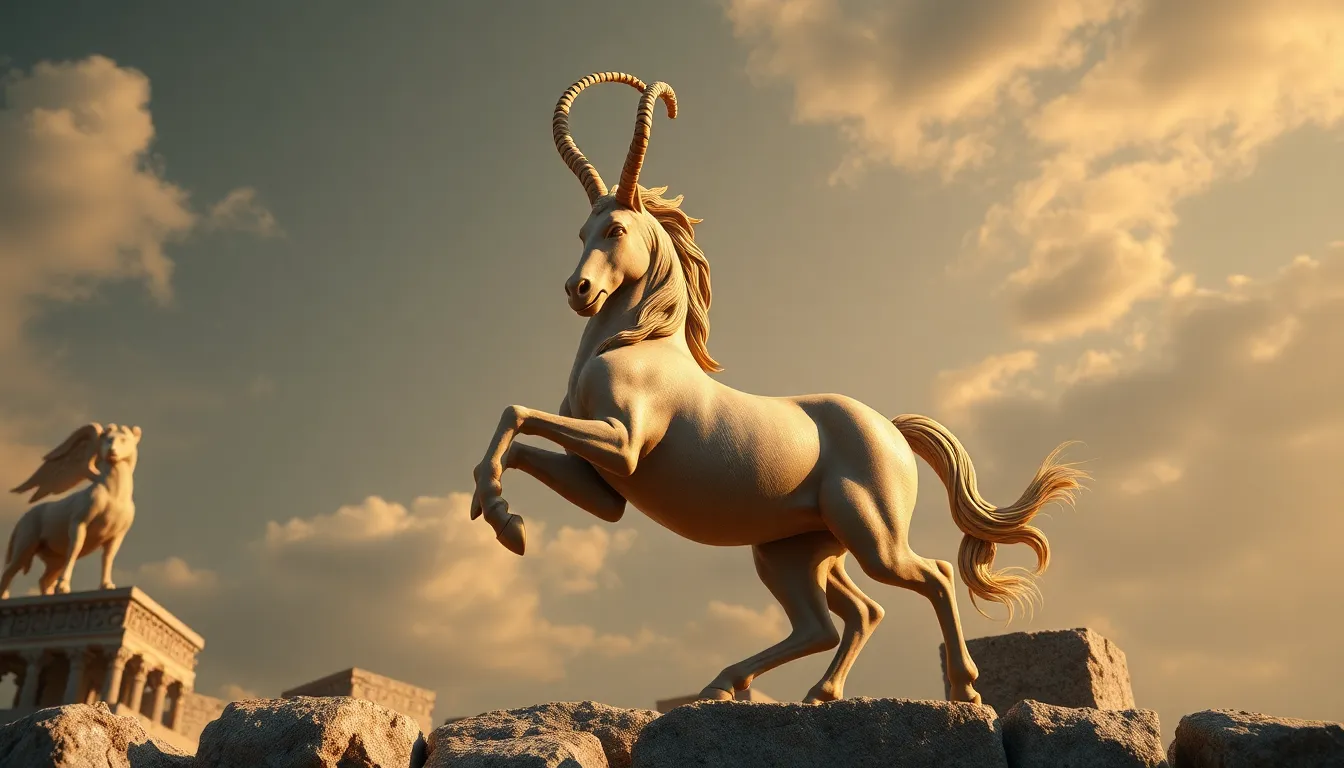The Centaur in Ancient Greek Comedy: Humor and Satire
I. Introduction
The centaur, a creature from Greek mythology, is depicted as a being with the upper body of a human and the lower body of a horse. These mythological beings are often associated with wildness, duality, and the tension between civilization and barbarism. Their unique hybrid form has given rise to various interpretations in literature and art, particularly in the realm of comedy.
In ancient Greek comedy, centaurs play a significant role, serving as comedic figures that embody both the absurdity and complexity of human nature. This article aims to explore the humor and satire surrounding centaurs in ancient Greek comedic works, examining how these creatures reflect societal norms and human behaviors.
II. Historical Context of Centaurs in Greek Mythology
Centaurs have their origins in ancient Greek mythology, often portrayed as unruly beings that inhabit the forests and mountains of Thessaly. They are generally characterized by their dual nature, embodying both human intellect and animalistic instincts.
In ancient Greek culture, centaurs symbolize a range of themes, including the conflict between civilization and savagery, the struggle of the human condition, and the complexities of desire and aggression. With the transition from mythological narratives to comedic representation, centaurs began to be depicted in a more humorous light.
III. The Role of Centaurs in Ancient Greek Comedy
One of the most notable works featuring centaurs is Aristophanes’ “The Clouds,” where they serve as a comedic device to illustrate the absurdities of philosophical thought and human behavior. In this play, centaurs embody the chaos of conflicting ideas, providing a humorous critique of contemporary society.
As comedic characters, centaurs often function as a juxtaposition against human traits. They represent the struggle between rational thought and primal instincts, leading to various comedic situations:
- Humorous misunderstandings arising from their dual nature.
- Physical comedy stemming from their horse-like attributes.
- Exaggerated portrayals of their wild, uninhibited behavior.
IV. Humor Techniques Involving Centaurs
Comedic techniques involving centaurs often include:
- Wordplay and puns: Centaur characteristics are ripe for clever wordplay, with jokes often revolving around their hybrid nature. For instance, they might be depicted as struggling to balance their human intellect with their horse instincts.
- Physical comedy: The visual gag of a creature that is half-human, half-horse lends itself to slapstick humor, where their movements and interactions lead to comedic chaos.
- Irony and absurdity: The portrayal of centaurs can emphasize the absurdity of human behavior, often highlighting the ironic contrast between their noble human side and their brutish animal side.
V. Satirical Elements in Centaur Depictions
Centaurs serve as a vehicle for satire in ancient Greek comedy, allowing playwrights to critique human behavior. Their antics often reflect the follies and vices of humanity:
- Critique of human behavior: Centaurs’ unruly actions can mirror human follies, revealing the absurdity of social norms and customs.
- Political and social commentary: Through centaur characters, playwrights could address contemporary political issues, using humor to challenge authority and societal values.
- Challenging societal norms: The wild nature of centaurs allows for the exploration of themes such as freedom, chaos, and the boundaries of civilization.
VI. Comparative Analysis with Other Mythical Creatures
When compared to other mythical creatures like satyrs, centaurs share similarities and differences that enhance their comedic potential:
- Similarities with satyrs: Both centaurs and satyrs embody wildness and are often associated with revelry and excess.
- Differences: Unlike satyrs, who are fully human in form (with goat-like characteristics), centaurs possess a more pronounced duality, which can lead to more complex comedic situations.
- Unique comedic potential: The centaur’s hybrid nature allows for a wider range of comedic scenarios, as they grapple with both human and animalistic traits.
The legacy of centaur humor has influenced later comedic traditions, with their unique traits providing inspiration for various forms of storytelling.
VII. Legacy of Centaurs in Western Comedy
The impact of centaurs on later theatrical works and literature is significant. Their portrayal in ancient Greek comedy laid the groundwork for future interpretations of hybrid creatures in Western literature:
- Modern adaptations: Centaur humor continues to resonate in contemporary culture, appearing in films, television shows, and literature that explore themes of duality and identity.
- Enduring appeal: The combination of humor and mythology surrounding centaurs ensures their lasting presence in the pantheon of comedic figures.
VIII. Conclusion
In summary, centaurs in ancient Greek comedy serve as multifaceted characters that embody both humor and satire. Their unique hybrid form allows for a rich exploration of human behavior, societal norms, and the complexities of the human condition. The legacy of centaurs continues to influence modern comedic traditions, reminding us of the enduring relevance of humor and satire in mythology.
Ultimately, the centaur’s role in ancient Greek comedy highlights the interplay between civilization and savagery, urging audiences to reflect on their own behaviors and societal constructs through the lens of laughter.




